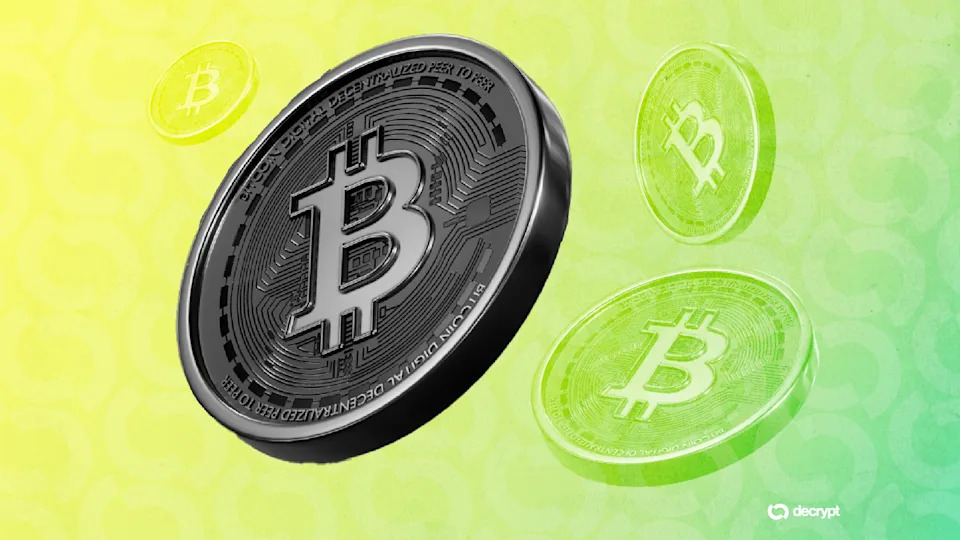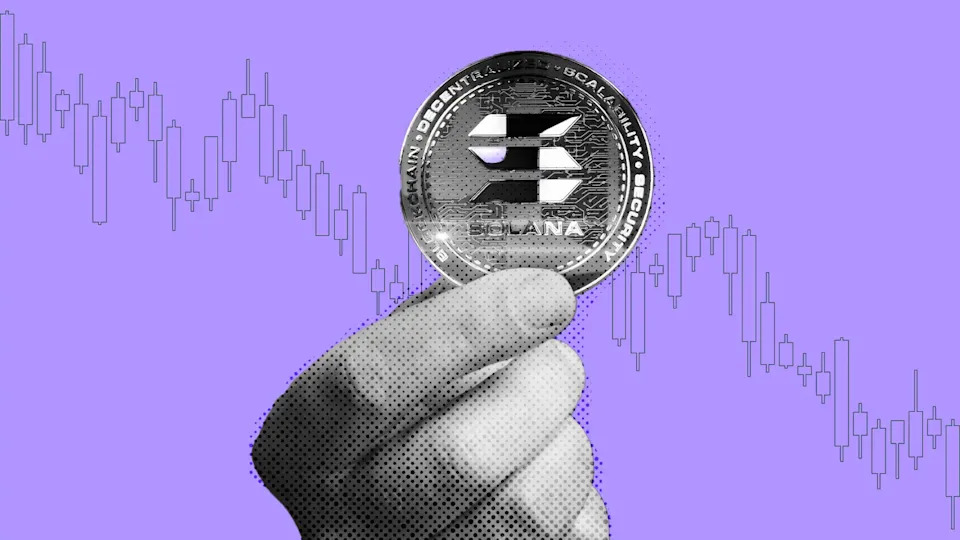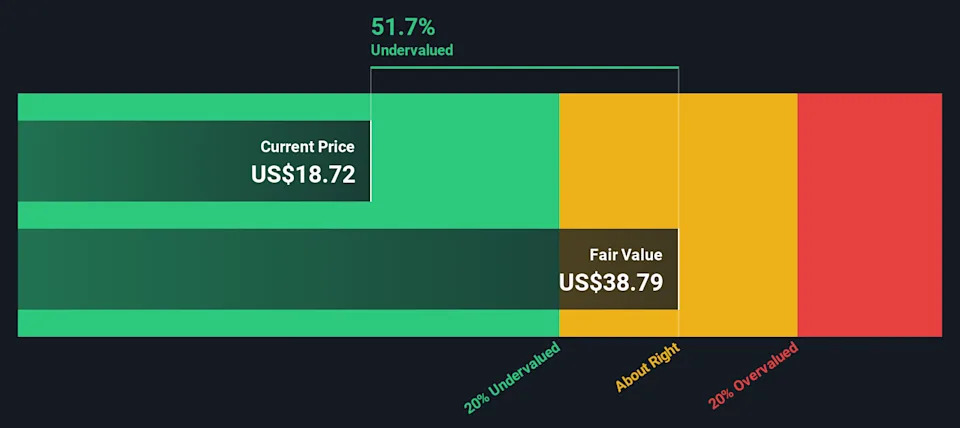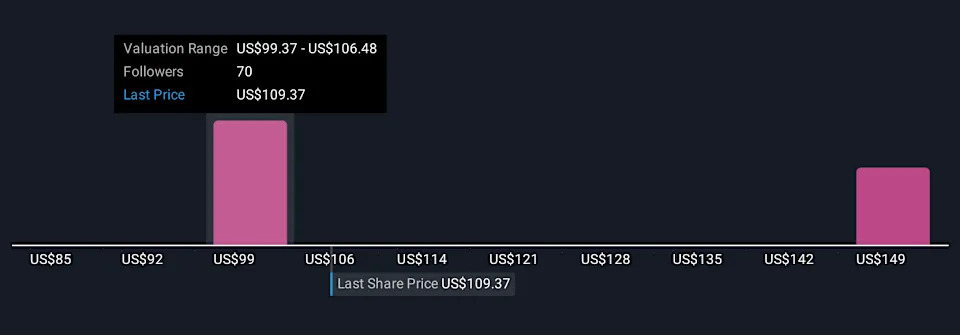Thank you! Your submission has been received!
Oops! Something went wrong while submitting the form.

The Year in Bitcoin 2025: Breaking Records as Governments, Wall Street Take Interest
Key Points
- Bitcoin's Record High: Bitcoin reached an all-time high of $126,000 in October 2025, despite a volatile year with a low of $76,000 in April, driven by global trade tensions under U.S. President Donald Trump.**
- U.S. Strategic Bitcoin Reserve: President Trump signed an executive order in 2025 to establish a strategic Bitcoin reserve, estimated at 200,000 BTC worth $18.1 billion, marking a shift from selling seized Bitcoin to storing it securely.**
- Corporate Bitcoin Holdings: By December 2025, 71 U.S. publicly traded companies held over 961,000 BTC, nearly triple the amount held by governments, though many faced stock price volatility and financial challenges.**
- Market Dominance: Bitcoin's market share grew to 57.6% of the $3 trillion crypto market by mid-December 2025, up from 48% at the year's start, solidifying its position among digital assets.**
- Privacy and Code Debates: Bitcoin faced scrutiny over privacy with the Samourai Wallet case and debates over Bitcoin Core updates, highlighting tensions between innovation, privacy, and network integrity.**
Summary
In 2025, Bitcoin achieved unprecedented heights, peaking at $126,000 in October, despite a turbulent year with prices dipping to $76,000 amid U.S. trade wars under President Donald Trump. The cryptocurrency gained significant institutional support, with Trump establishing a strategic Bitcoin reserve of 200,000 BTC, valued at $18.1 billion, signaling a policy shift from selling seized assets to securing them. Bitcoin's market dominance rose to 57.6% of the $3 trillion crypto market, while 71 U.S. companies amassed over 961,000 BTC, though many faced stock volatility. Wall Street saw a surge in Bitcoin-buying firms, but hype faded, raising concerns about forced sales. Meanwhile, privacy issues emerged with the prosecution of Samourai Wallet developers and debates over Bitcoin Core updates allowing larger non-payment data, sparking concerns over network misuse versus censorship risks. Trump's administration and state-level initiatives, alongside global interest from countries like Brazil, underscored Bitcoin's evolving status as a reserve asset akin to gold, though challenges around privacy, regulation, and market stability persisted.
yahoo
December 22, 2025
Crypto

Bitcoin Hits $90,000—But Rally May Not Last Through Holidays
Key Points
- Bitcoin Rally Vulnerability: Bitcoin reached an eight-day high of $90,353 but has since retreated to just under $90,000, with on-chain data suggesting the rally is driven by speculative futures trading rather than genuine investor demand.**
- Derivatives-Led Movement: Data from Velo shows a divergence between rising open interest in perpetual futures and declining spot market activity, indicating a leveraged, derivatives-driven price increase.**
- Lack of U.S. Investor Demand: The Coinbase premium has turned negative, and U.S. spot Bitcoin ETFs have seen net outflows, reflecting weak buying interest from U.S. investors and institutions.**
- Corporate Inflows as Exception: Digital Asset Trusts recorded $2.23 billion in net inflows for the week of December 15-21, a 72% surge driven by corporate treasury purchases, though this hasn’t spurred broader market strength.**
- Market Consolidation: Analysts describe Bitcoin’s current trading around $90,000 as consolidation within a $85,000 to $95,000 range, with no clear directional trend expected until mid-January or beyond the holiday period.**
Summary
Bitcoin recently hit an eight-day high of $90,353 before pulling back to just under $90,000, marking a 2.2% daily increase. However, on-chain data suggests this rally, driven by speculative futures trading rather than genuine spot market demand, may not be sustainable. Indicators like the negative Coinbase premium and net outflows from U.S. spot Bitcoin ETFs highlight a lack of buying interest from key U.S. investors. While Digital Asset Trusts saw a significant $2.23 billion in net inflows during December 15-21, fueled by corporate treasury purchases of Bitcoin, XRP, and Ethereum, this has not translated into broader market momentum. Analysts note Bitcoin is stuck in a consolidation range between $85,000 and $95,000, with no clear trend expected until mid-January or post-holiday liquidity returns. Prediction markets and experts remain cautious, with some forecasting a contained trading range through the holidays and others warning of vulnerability due to year-end liquidity drying up and persistent selling pressure above $90,000.
yahoo
December 22, 2025
Crypto

Tether Hiring Push Reveals Plans for AI-Integrated Self-Custodial Crypto Wallet
Key Points
- Tether is expanding its role from a stablecoin issuer to a consumer-facing tech entity by developing a self-custodial mobile crypto wallet.
- The wallet will support only four assets: Bitcoin (BTC) via Lightning Network, Tether (USDT), gold-pegged XAUT, and the new US-compliant stablecoin USAT.
- It will integrate proprietary technologies like the Wallet Development Kit (WDK) for non-custodial architecture and QVAC, a local AI computing platform for privacy-focused, on-device processing.
- Tether’s strategy focuses on creating a "hard money" payment rail for pure payments and store-of-value assets, avoiding speculative DeFi tokens.
- This move, alongside the recent PearPass launch, highlights Tether’s push towards vertical integration, controlling wallet interface, stablecoins, security, and AI technology.
Summary
Tether, traditionally a backend stablecoin issuer, is pivoting towards a consumer-facing role with plans for a self-custodial mobile crypto wallet, as announced by CEO Paolo Ardoino on December 20. The wallet, detailed in a recruitment posting for a Lead Software Engineer, will support only four assets—Bitcoin (BTC) via Lightning Network, Tether (USDT), gold-pegged XAUT, and the new US-compliant stablecoin USAT—focusing on payments and store-of-value rather than speculative DeFi tokens. Powered by proprietary technologies like the Wallet Development Kit (WDK) for non-custodial architecture and QVAC, a local AI platform, the wallet aims to offer privacy-focused, on-device processing for advanced financial tasks. This avoids the privacy risks of cloud-based systems typical of Big Tech. The initiative, alongside the recent PearPass peer-to-peer password manager launch, underscores Tether’s vertical integration strategy, controlling the wallet interface, stablecoins, security via PearPass, and AI via QVAC. This reduces reliance on third-party platforms, enhancing operational autonomy and positioning Tether as a tech giant in the crypto space.
yahoo
December 21, 2025
Crypto

Bitcoin Lightning Network Reaches New All-Time Capacity High as Adoption Grows
Key Points
- Bitcoin's Lightning Network capacity has reached a new all-time high above 5,600 BTC, surpassing the previous record from March 2023.
- The capacity surge is driven by more Bitcoin flowing into existing channels, primarily from large exchanges and institutional players, rather than grassroots adoption.
- Despite the capacity increase, user participation has not grown, with the number of nodes and channels declining from their peaks.
- Major crypto exchanges like Binance and OKX have significantly contributed to the recent capacity boost.
- Developments such as Tether’s investment in Lightning-focused startup Speed and Lightning Labs’ Taproot Assets upgrade are fostering renewed interest in the network.
Summary
Bitcoin’s Lightning Network, a layer-2 payments solution, has achieved a new all-time high in capacity, exceeding 5,600 BTC, as reported by Bitcoin Visuals and Amboss. This milestone, reached after a year of decline, reflects a rebound in November and December, driven by increased Bitcoin commitments to payment channels for faster, cheaper transactions. However, this growth is not matched by broader user adoption, with node counts dropping to around 14,940 from a peak of over 20,700, and channel numbers also declining. The surge is largely fueled by institutional players and major exchanges like Binance and OKX, rather than individual users. Additionally, ecosystem developments, such as Tether’s $8 million investment in Lightning startup Speed for stablecoin integration and Lightning Labs’ Taproot Assets upgrade for multi-asset support, signal growing interest. Despite these advancements, the network’s capitalization is increasing without a corresponding rise in grassroots participation, highlighting a gap between capacity and widespread usage.
yahoo
December 17, 2025
Crypto

Solana Lending Soars 33% to $4.8B as DeFi Activity Defies the Market Turmoil
Key Points
- Solana's lending sector has surged to $4.8 billion in total value locked (TVL), reflecting a 33% increase from the previous year despite market volatility.
- Kamino Finance leads as the dominant lending platform within Solana's ecosystem, holding approximately $3.6 billion in deposits.
- Factors like higher network throughput, lower fees, and increased stablecoin supply (over $13 billion) have fueled lending growth on Solana.
- Lending constitutes a significant portion of Solana's DeFi activity, contributing to the chain's total DeFi TVL of $8.8 billion in late 2025.
- The resilience of Solana's lending market signals a maturing DeFi landscape, shifting focus from speculative trading to repeatable financial operations.
Summary
Solana's on-chain lending sector has demonstrated remarkable growth, reaching a total value locked (TVL) of $4.8 billion by December 2025, a 33% increase from the prior year's $2.7 billion, despite significant cryptocurrency market volatility. This expansion, driven by steady borrowing demand and collateral deposits, contrasts with price declines in SOL and other major assets. Kamino Finance stands out as the leading lending platform, managing $3.6 billion in deposits, while other protocols like Marginfi and Jupiter Lend also contribute to the sector's strength. Key factors supporting this growth include Solana's high network throughput, low fees, a stablecoin supply exceeding $13 billion, and innovations like real-world asset integrations and automated yield strategies. Lending now accounts for a substantial share of Solana's broader DeFi ecosystem, which hit $8.8 billion in TVL, reflecting a shift toward sustainable financial operations over speculative trading. While concentration in a few protocols raises systemic risk concerns, analysts view this trend as a sign of Solana's maturing DeFi landscape. The sector's future resilience will depend on stable asset prices, continued stablecoin inflows, and the development of new financial tools, particularly for cross-chain and institutional use. For now, Solana's lending market remains a standout amid turbulent market conditions.
yahoo
December 11, 2025
Crypto

US Crypto Bill Has Until February Before It’s “Dead,” Top Senator Warns
Key Points
- Urgent Timeline: Senator Thom Tillis warns that Congress has a narrow window until early January or February to pass cryptocurrency legislation before election politics and gridlock stall progress.**
- Legislative Stalls: The ongoing government shutdown since October 1 and disputes over funding have paralyzed Washington, delaying crypto bills like the CLARITY Act, which passed the House with strong bipartisan support.**
- CLARITY Act Focus: The CLARITY Act aims to define regulatory jurisdiction over digital assets between the CFTC and SEC, distinguishing between decentralized digital commodities and centralized restricted digital assets.**
- Senate Delays: Progress in the Senate has slowed due to a leaked Democratic proposal on DeFi rules and the ongoing shutdown, despite earlier optimism for bills like the Responsible Financial Innovation Act.**
- Bipartisan Efforts: Recent closed-door meetings with industry leaders and bipartisan support suggest a push for a year-end deal, though skepticism remains with only a 20% chance of passage by 2025 per Polymarket data.**
Summary
North Carolina Senator Thom Tillis has issued a stark warning that Congress must act by early 2025 to pass critical cryptocurrency legislation, or risk it being derailed by political gridlock and the 2026 midterm elections. Speaking to Bloomberg, Tillis highlighted the urgency as the government shutdown, ongoing since October 1, and disputes over funding have stalled progress on key bills like the CLARITY Act, which seeks to clarify regulatory oversight of digital assets between the CFTC and SEC. Despite bipartisan support—evidenced by the House passing the CLARITY Act and the earlier GENIUS Act becoming law—Senate discussions have faltered due to a leaked DeFi proposal and the shutdown. Recent closed-door meetings with industry leaders show renewed bipartisan efforts, with Coinbase CEO Brian Armstrong noting 90% of issues resolved and a potential Thanksgiving deadline. However, skepticism persists, with Polymarket data indicating only a 20% chance of passage by 2025. As other nations advance their digital asset frameworks, the U.S. risks falling behind if it cannot overcome political paralysis. Tillis emphasized that failure to act by February could render the current push for crypto reform effectively “dead,” underscoring the fragile momentum in Washington.
yahoo
October 28, 2025
Crypto

Morning Minute: Solana Staking ETF Goes Live Today
Key Points
- Solana ETF Launch: The first U.S. spot Solana ETFs, including Bitwise Spot Solana ETF (BSOL) and Grayscale Solana Trust, go live this week, marking Solana's entry into the ETF arena alongside Bitcoin and Ethereum.**
- Staking Feature: The Bitwise Solana ETF will track 100% spot SOL and participate in staking, potentially compounding yield through validator rewards.**
- Altcoin ETFs: Alongside Solana, Litecoin and Hedera ETFs from Canary Capital also begin trading, representing the first wave of altcoin ETFs in U.S. markets.**
- Market Impact: Solana's ETF launch enhances liquidity and access for institutional investors and retirement accounts, positioning SOL in the same regulated category as BTC and ETH.**
- BlackRock Absence: Unlike Bitcoin and Ethereum ETFs, BlackRock is not yet involved in Solana ETFs, which may temper expectations compared to the dominant inflows seen in BlackRock’s BTC and ETH funds.**
Summary
The Morning Minute newsletter by Tyler Warner highlights significant developments in the crypto market, with a focus on the launch of the first U.S. spot Solana ETFs, including the Bitwise Spot Solana ETF (BSOL) and Grayscale Solana Trust, alongside Litecoin and Hedera ETFs. This marks Solana’s entry into the ETF space, following Bitcoin and Ethereum, with BSOL uniquely offering staking to compound yields. Trading near $200, Solana’s momentum as a top-5 crypto by market cap is bolstered by this move, enhancing liquidity and access for institutional and retirement accounts. However, the absence of BlackRock, a dominant player in BTC and ETH ETFs, suggests tempered expectations for inflows. Other news includes slight declines in major cryptos like BTC (-1% at $114,500) and ETH (-1% at $4,120), a $500M raise by MegaETH in its ICO, and political moves to ban crypto trading for U.S. elected officials. Additionally, Ethereum treasury stock ETHZ surged 14% after a $40M ETH sale, while NFT and memecoin markets showed mixed results. France’s potential Bitcoin Strategic Reserve and Mt. Gox’s delayed repayments also made headlines, reflecting the dynamic and evolving crypto landscape.
yahoo
October 28, 2025
Crypto

OKX Lists Virtuals Protocol (VIRTUAL) Amid Renewed Market Momentum
Key Points
- OKX Listing: OKX, a major cryptocurrency exchange, has listed Virtuals Protocol (VIRTUAL) on its spot platform, enabling trading against Tether (USDT) with deposits already open and trading starting at 8:00 UTC.**
- Price Surge and Correction: VIRTUAL recently hit a three-month high, with a 90% value increase over the past week, though it experienced a 7.8% dip in the last day, trading at $1.43.**
- Community Optimism: Despite the recent dip, 87% of traders remain bullish on VIRTUAL, with analysts predicting potential price targets of $2, $2.59, and $3.2.**
- Network Growth: The Virtuals Protocol network has seen significant growth, with daily active wallets averaging over 10,000 in late October and whale transactions over $100,000 increasing by 240% week-over-week.**
- Ecosystem Expansions: Growth is driven by ecosystem expansions, including AI agent integrations and the listing of all agent tokens on Coinbase, boosting VIRTUAL's utility and demand.**
Summary
OKX, a leading cryptocurrency exchange, has listed Virtuals Protocol (VIRTUAL) on its spot platform, allowing trading against Tether (USDT) starting at 8:00 UTC after a pre-open session. This listing coincides with renewed market interest in VIRTUAL, which recently achieved a three-month high and a 90% value increase over the past week, despite a recent 7.8% dip to $1.43. Community sentiment remains strongly bullish, with 87% of traders optimistic and analysts forecasting price targets up to $3.2. The network has also experienced significant growth, with daily active wallets surpassing 10,000 and whale transactions rising 240% week-over-week. This momentum is fueled by ecosystem expansions, including AI agent integrations and the listing of agent tokens on Coinbase, enhancing VIRTUAL's utility. OKX has implemented measures like price restrictions and a $10,000 limit on orders during the initial trading minutes to manage volatility. As Virtuals Protocol regains market attention, its ability to sustain this upward trajectory remains to be seen, but current trends and strategic developments signal a promising revival for the altcoin.
yahoo
October 28, 2025
Crypto

Is StoneCo’s 139% Rally in 2025 Backed by Fundamental Value?
Key Points
- Strong Performance: StoneCo has shown impressive gains with a 139.4% year-to-date increase, a 3.9% rise in the last week, and a 3.6% increase over the past month, despite a 63.4% drop over five years.**
- Undervaluation Indicators: Valuation analyses, including Excess Returns and Price-to-Sales (P/S) ratios, suggest StoneCo is undervalued, with intrinsic value estimated at 53.2% above current share price and a P/S Fair Ratio of 3.08x compared to its current 2.02x.**
- Fintech Growth Opportunities: Recent regulatory clarity and trends in Brazil’s digital payments landscape, alongside StoneCo’s focus on small business ecosystems, are driving renewed investor optimism.**
- Robust Financial Metrics: StoneCo’s Return on Equity (ROE) stands at 23.78%, with a Book Value of $43.24 per share and projected stable earnings per share (EPS) of $11.82, indicating strong profitability.**
- Narrative Tool: Simply Wall St’s Narratives feature allows investors to create personalized valuation stories for StoneCo, linking future expectations to financial forecasts with community fair value estimates ranging from $14.37 to $19.97 per share.**
Summary
StoneCo, a Brazilian fintech company, has captured investor attention with a remarkable 139.4% year-to-date stock gain, alongside recent weekly and monthly increases of 3.9% and 3.6%, respectively, despite a 63.4% decline over five years. The article by Simply Wall St highlights a compelling turnaround story fueled by Brazil’s evolving digital payments landscape and regulatory clarity, which, combined with StoneCo’s focus on small business ecosystems, has shifted investor sentiment toward optimism. Valuation analyses underscore the stock’s potential, with an Excess Returns model indicating a 53.2% undervaluation and a Price-to-Sales (P/S) Fair Ratio of 3.08x against a current 2.02x, suggesting a discount to its fundamental value. Financial metrics are strong, with a 23.78% Return on Equity and a projected earnings per share of $11.82. Additionally, the Narratives tool on Simply Wall St allows investors to craft personalized valuation stories, with community fair value estimates for StoneCo ranging from $14.37 to $19.97 per share. While the stock appears undervalued across multiple metrics, the article emphasizes a long-term, data-driven perspective and notes it is not financial advice, encouraging investors to consider their own objectives and the latest company developments.
yahoo
October 28, 2025
Crypto

2 Reasons to Buy Solana Before January 2026
Key Points
- Solana Outperformance: Solana has been the top-performing major cryptocurrency over the past 90 days, with a 5% increase, surpassing Ethereum (up 4%) and Bitcoin (down 6%).**
- Spot Solana ETFs: Seven spot Solana ETF applications are pending SEC approval, delayed by the federal government shutdown, but expected to be approved soon after it ends, potentially bringing significant institutional investment.**
- Blockchain Revenue Surge: The Solana blockchain ecosystem generated nearly $3 billion in revenue over the past 12 months, driven by diverse sectors like trading, DeFi, and AI.**
- Upcoming Upgrade: A major blockchain upgrade, "Alpenglow," is set for early 2026, promising enhanced speed and efficiency for Solana, already one of the fastest Layer-1 blockchains.**
Summary
Solana (CRYPTO: SOL) has emerged as the leading major cryptocurrency over the past 90 days, gaining 5% while Ethereum rose 4% and Bitcoin fell 6%. Despite a modest yearly performance of less than 1%, Solana shows strong potential heading into 2026. Two key factors fuel this optimism: the anticipated approval of spot Solana ETFs, delayed by a U.S. government shutdown but expected to attract up to $6 billion in institutional funds, and a surge in blockchain activity, with the ecosystem generating nearly $3 billion in revenue over the past year from diverse sectors like DeFi and AI. Additionally, a significant upgrade, "Alpenglow," scheduled for early 2026, aims to boost Solana’s speed and efficiency. While some speculate Solana could reach $3,200 by 2030—a 16-fold increase from its current $200 price—it remains a risky altcoin investment compared to Bitcoin. Nonetheless, its undervaluation relative to Ethereum and dynamic growth make it a compelling option for investors looking toward 2026.
The Motley Fool
October 27, 2025
Crypto

Bitcoin Price Thrives on Fear, Expert Reveals
Key Points
- Crypto Fear and Greed Index: The index has been below 40, indicating "Fear" territory for nearly two weeks, influenced by factors like Trump's trade war with China and significant crypto market liquidations.**
- Historical Fear Patterns: Copper's analysis of 40 fear events shows Bitcoin typically drops 10-12% within 3-4 weeks of entering Fear territory, followed by a 15-30% rebound in 6-10 weeks.**
- Price Recovery Potential: The current setup suggests Bitcoin's recent low of $102,000-$103,000 could be a Fear-driven bottom, with potential recovery to $125,000-$130,000 by mid-December 2025.**
- Bull Run Continuation: Copper describes the recent dip as a "reset, not a reversal," indicating corrections are healthy and the bull run may not be over, with possible highs above $126,198 by year-end.**
Summary
The Crypto Fear and Greed Index, a key measure of investor sentiment, has signaled "Fear" with scores below 40 for nearly two weeks, driven by external pressures like Donald Trump’s trade war with China and crypto market liquidations. However, a Copper report analyzing 40 fear events suggests this fear presents opportunity, as Bitcoin typically drops 10-12% within weeks of such sentiment, followed by a 15-30% rebound. The current dip to $102,000-$103,000 may mark a bottom, with potential recovery to $125,000-$130,000 by mid-December 2025. Despite a lackluster October—usually a strong month for Bitcoin dubbed “Uptober”—Copper views this as a healthy reset within the bull run, not its end. Factors like Bitcoin ETFs and institutional inflows may dampen volatility, potentially limiting dramatic price surges but also softening drawdowns. While Polymarket odds for Bitcoin reaching $130,000 in 2025 have dropped from 86% to 54%, Copper remains optimistic, suggesting even higher targets like $150,000 could be tested in early 2026 if historical patterns hold.
yahoo
October 27, 2025
Crypto

How Recent Developments Are Shaping the SolarEdge Investment Story
Key Points
- SolarEdge Technologies' consensus analyst price target has increased from $25.10 to $27.27, reflecting optimism about revenue growth and market share recovery.
- Bullish analysts from Barclays, UBS, and others highlight potential upside, citing SolarEdge’s ability to recapture market share from competitors like Tesla and its diversified U.S. manufacturing presence.
- Bearish analysts, including Citi and Guggenheim, maintain Sell ratings due to concerns over valuation and execution risks, while UBS notes potential demand headwinds from phasing out solar tax credits.
- Recent news includes SolarEdge’s international expansion with U.S.-made products to Australia and a partnership with Solar Landscape for over 500 commercial rooftop projects.
- U.S. policy changes, such as potential cuts to clean energy funding and termination of $7 billion in solar grants, could impact SolarEdge and the broader solar industry.
Summary
SolarEdge Technologies has seen a slight upward revision in its consensus analyst price target from $25.10 to $27.27, driven by expectations of improved revenue growth (from 17.57% to 17.85%) and potential market share gains. Bullish analysts, including Barclays and UBS, point to upside potential, emphasizing SolarEdge’s competitive positioning against Tesla and its strong U.S. manufacturing base. However, bearish perspectives from Citi and Guggenheim highlight valuation concerns and execution risks, with UBS cautioning about long-term demand due to phasing out solar tax credits. Recent developments include SolarEdge’s international shipments of U.S.-made products to Australia and a partnership with Solar Landscape for over 500 commercial solar projects. Meanwhile, U.S. policy shifts, such as potential cuts to $12 billion in clean energy funding and the termination of $7 billion in solar grants, pose risks to the industry. Financial metrics show a slight decline in net profit margin (from 2.87% to 2.75%) and a higher future P/E ratio (from 54.8x to 61.8x), suggesting increased growth expectations or valuation multiples. The article, provided by Simply Wall St, underscores the dynamic narrative around SolarEdge, urging investors to monitor evolving policies, competition, and analyst forecasts to assess fair value against share price.
yahoo
October 26, 2025
Crypto

The Bull Case For T. Rowe Price Group (TROW) Could Change Following Its Debut Crypto ETF Filing – Learn Why
Key Points
- Crypto ETF Filing: T. Rowe Price Group has filed with the SEC to launch its first actively managed crypto exchange-traded fund, targeting exposure to a diversified basket of digital currencies and aiming to outperform the FTSE Crypto US Listed Index.**
- Market Entry: This move signifies T. Rowe Price’s entry into the regulated cryptocurrency investment market, reflecting growing institutional demand for digital asset access through traditional asset managers.**
- Growth Strategy: The crypto ETF aligns with the company’s broader efforts to expand ETF offerings and reach new client segments, despite challenges like fee pressure and client outflows from traditional products.**
- Strategic Collaboration: A recent partnership with Goldman Sachs in September aims to enhance investment solutions for retirement and wealth investors, supporting efforts to broaden distribution channels and offset legacy product headwinds.**
Summary
T. Rowe Price Group has taken a significant step into the cryptocurrency market by filing with the SEC to launch its first actively managed crypto ETF, designed to offer exposure to a diversified range of digital currencies and outperform the FTSE Crypto US Listed Index. This move marks the company’s entry into the regulated crypto investment space, highlighting rising institutional interest in digital assets through traditional asset management channels. Alongside this, T. Rowe Price is addressing broader growth challenges by expanding its ETF offerings and forming strategic partnerships, such as a recent collaboration with Goldman Sachs to enhance retirement and wealth investment solutions. However, the firm faces ongoing issues like fee compression and client outflows from core equity products, which the crypto ETF is unlikely to resolve in the near term. The company’s long-term narrative projects revenue growth to $7.6 billion and earnings to $2.3 billion by 2028, with a fair value estimate of $108.15, suggesting a modest 4% upside. Despite optimism in some community fair value estimates (up to $166.93), risks of market share loss to passive competitors persist, underscoring the need for innovative strategies to maintain organic asset growth in a competitive landscape.
yahoo
October 26, 2025
Crypto

Polymarket Exec Confirms Token, Airdrop—After Prediction Market Returns to US
Key Points
- Polymarket is officially developing a token and planning an airdrop, with a focus on ensuring the token has true utility and longevity.
- The company's current priority is relaunching its product in the U.S., following a 2022 CFTC settlement that effectively banned the platform there.
- The U.S. app is in early testing, accessible only by invitation, with the token launch (POLY) to follow once U.S. operations are stabilized.
- Polymarket faced regulatory challenges, including a $1.2 million CFTC fine in 2022 and an FBI raid on CEO Shayne Coplan’s home last year.
- Recent developments, including a CFTC no-action letter after acquiring QCX, have paved the way for Polymarket’s U.S. relaunch.
Summary
Polymarket, a leading prediction market platform, is set to introduce a token and airdrop, as confirmed by CMO Matthew Modabber on Degenz Live. The company is prioritizing the token’s utility and longevity, though its immediate focus is on relaunching in the U.S. after a 2022 CFTC settlement resulted in a $1.2 million fine and an effective ban. Currently, the U.S. app is in early testing with limited access. Once U.S. operations are solidified, attention will shift to the POLY token launch, which has been long-rumored and teased by CEO Shayne Coplan. Despite past challenges, including an FBI raid on Coplan’s home, Polymarket has grown into an industry titan, recently valued at $9 billion following a $2 billion investment from Intercontinental Exchange. The acquisition of derivatives exchange QCX and a subsequent CFTC no-action letter have facilitated the U.S. relaunch. Meanwhile, speculation around the token has increased, with odds of an official announcement by year-end rising to 29% on Myriad, reflecting growing anticipation among users and investors.
yahoo
October 24, 2025
Crypto

Smart traders are buying ahead of Trump–Xi meeting
Key Points
- Crypto Market Surge: Digital assets rose on Friday following news of a Trump-Xi meeting on October 30 at the APEC summit, with global crypto market cap up 1.4% to $3.84 trillion, Bitcoin at $111,400, and Ether near $3,960.**
- Solana Rally: Solana traded close to $193, nearing double-digit weekly gains, while Bitcoin's market dominance remained just below 58%.**
- Smart Trader Activity: On-chain data revealed a "smart trader" with a 100% win rate increasing bullish bets, including a 33,270 ETH long position ($131 million) and a 4x long on 80 BTC ($8.9 million), with profits over $15.4 million.**
- Market Sentiment: Bitcoin open interest climbed over 3% to $154.9 billion, signaling fresh capital and confidence, with top traders on Binance and OKX showing a net bullish stance.**
- Geopolitical Impact: A potential easing of US-China trade tensions could reduce uncertainty, weaken the dollar, and support risk assets like crypto, though stalled talks could reverse gains.**
Summary
Digital assets gained traction on Friday after news of a Trump-Xi meeting on October 30 at the APEC summit in South Korea, signaling a possible de-escalation of US-China trade tensions. The global crypto market cap rose 1.4% to $3.84 trillion, with Bitcoin at $111,400 and Ether near $3,960. Solana neared $193, boasting strong weekly gains. Blockchain data highlighted a "smart trader" with a perfect win rate ramping up bullish positions on Ether and Bitcoin, amassing over $15.4 million in profits. Bitcoin open interest surged over 3% to $154.9 billion, reflecting renewed trader confidence, especially among top players on major exchanges. For crypto, the Trump-Xi meeting could ease macro pressures like tariffs and export controls, which often strengthen the dollar and dampen risk assets. A tariff freeze or softer rhetoric on tech and supply chains could bolster global growth expectations, favoring crypto. However, if talks falter, volatility and a stronger dollar could weigh on the market. Solana’s upcoming Breakpoint conference in December also looms as a potential catalyst for further ecosystem developments.
yahoo
October 24, 2025
Crypto

Elon Musk’s SpaceX makes a surprising move
Key Points
- SpaceX transferred 2,495 Bitcoin, valued at approximately $268.5 million, on October 21, marking its first on-chain transfer in three months.
- The transfer was split into two tranches (1,298 BTC and 1,197 BTC) to two unmarked addresses, with no further movement from these addresses.
- SpaceX currently holds 8,285 BTC, worth about $1.1 billion, after liquidating nearly 70% of its holdings during the 2022 Terra-Luna and FTX crises.
- Elon Musk recently endorsed Bitcoin, praising it as a currency backed by energy compared to "fake" fiat money printed by governments.
Summary
On October 21, 2025, SpaceX, Elon Musk's space technology company, executed its first Bitcoin transfer in three months, moving 2,495 BTC worth $268.5 million to two unmarked addresses, as reported by Arkham Intelligence. The transfer, split into two tranches of 1,298 and 1,197 BTC, followed small test transactions from Coinbase Prime. Despite SpaceX liquidating nearly 70% of its Bitcoin holdings during the 2022 Terra-Luna and FTX crises, it currently holds 8,285 BTC, valued at approximately $1.1 billion. This latest transfer did not trigger market panic, unlike previous large movements. Elon Musk has recently voiced strong support for Bitcoin, highlighting its value as a currency backed by energy rather than "fake" fiat money printed by governments. He also confirmed that a potential new political party he discussed would embrace Bitcoin. Meanwhile, Bitcoin reached an all-time high of $126,198.07 on October 7 but faced pressure from U.S.-China trade tensions, trading at $108,575.63 at the time of reporting. This story, originally published by TheStreet, underscores SpaceX's significant role in the crypto space and Musk's ongoing influence on Bitcoin's public perception.
yahoo
October 21, 2025
Crypto